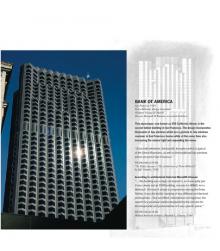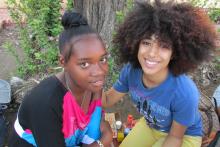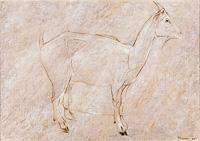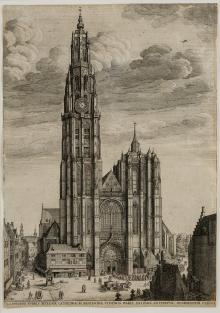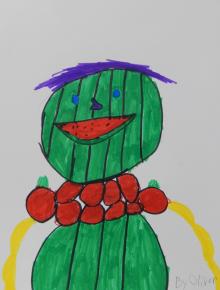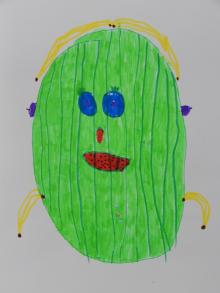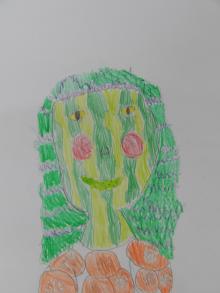Advocating for the importance of the arts in schools, the Jordan Schnitzer Museum of Art has partnered with Edison Elementary School for the past year exploring the relationship between sustainability, food, and art. The museum offers in-class projects for 3rd grade students at the school, and after school classes for K-5th grade Edison students take place at the museum.
Over the past term, students have been exploring healthy eating and colorful food inspired by Edison’s School Garden Project and the work of Karla Chambers, artist and owner of Stahlbush Farms. The students plant and harvest organic fruit and vegetables from the school garden, which are then incorporated into their school lunches. In alignment with the garden project, Chambers highlights nutrition education in an effort to inspire children to make healthier food choices. Students have learned how the color of food can relate to its nutritional value, such as brown and white fried food versus a rainbow of healthy colors. During this exhibition, students’ artwork will be displayed alongside banners created by Chambers that depict the color of health and nutrition.
Students are learning that they are what they eat through self-portraits comprised of vegetable shapes, textures, and colors, with emphasis on Chambers’ focus on farming and food in her paintings and how her paintings are self-portraits of her history. Some of the projects in which the after school students have been involved include learning how healthy food choices can relate to the color wheel. Drawing and painting their favorite and healthiest meal, the after school students have constructed a table setting of their dream meal depicting their understanding of a healthy meal.
During the exhibition, Edison students will participate in an all-day event at the museum to further delve into discussion about the healthy food choices they can make and discovering how they will change their eating habits over time.

